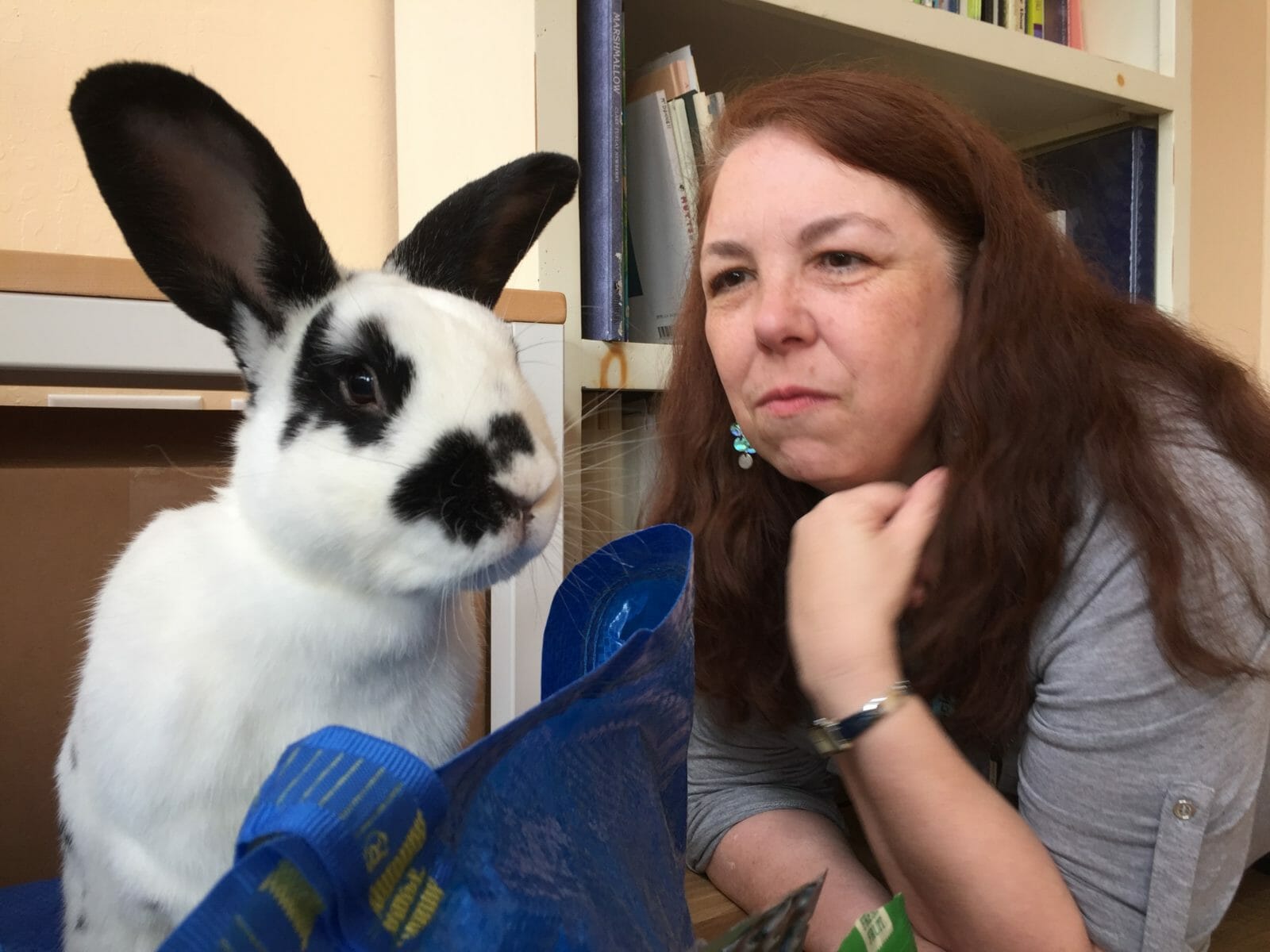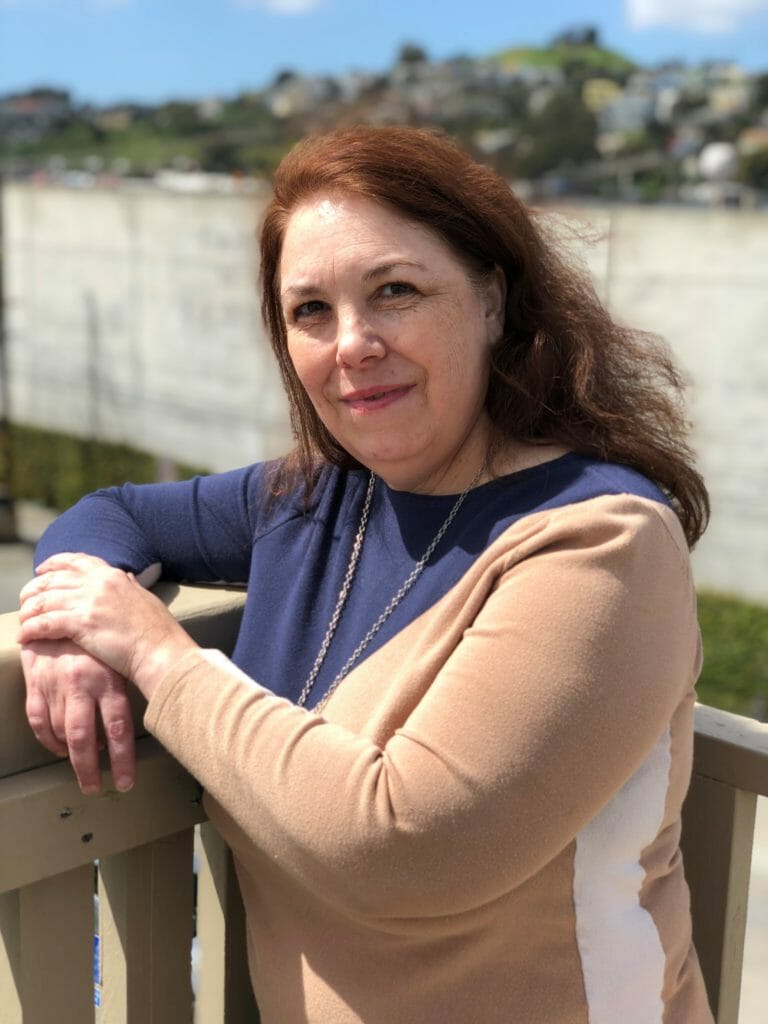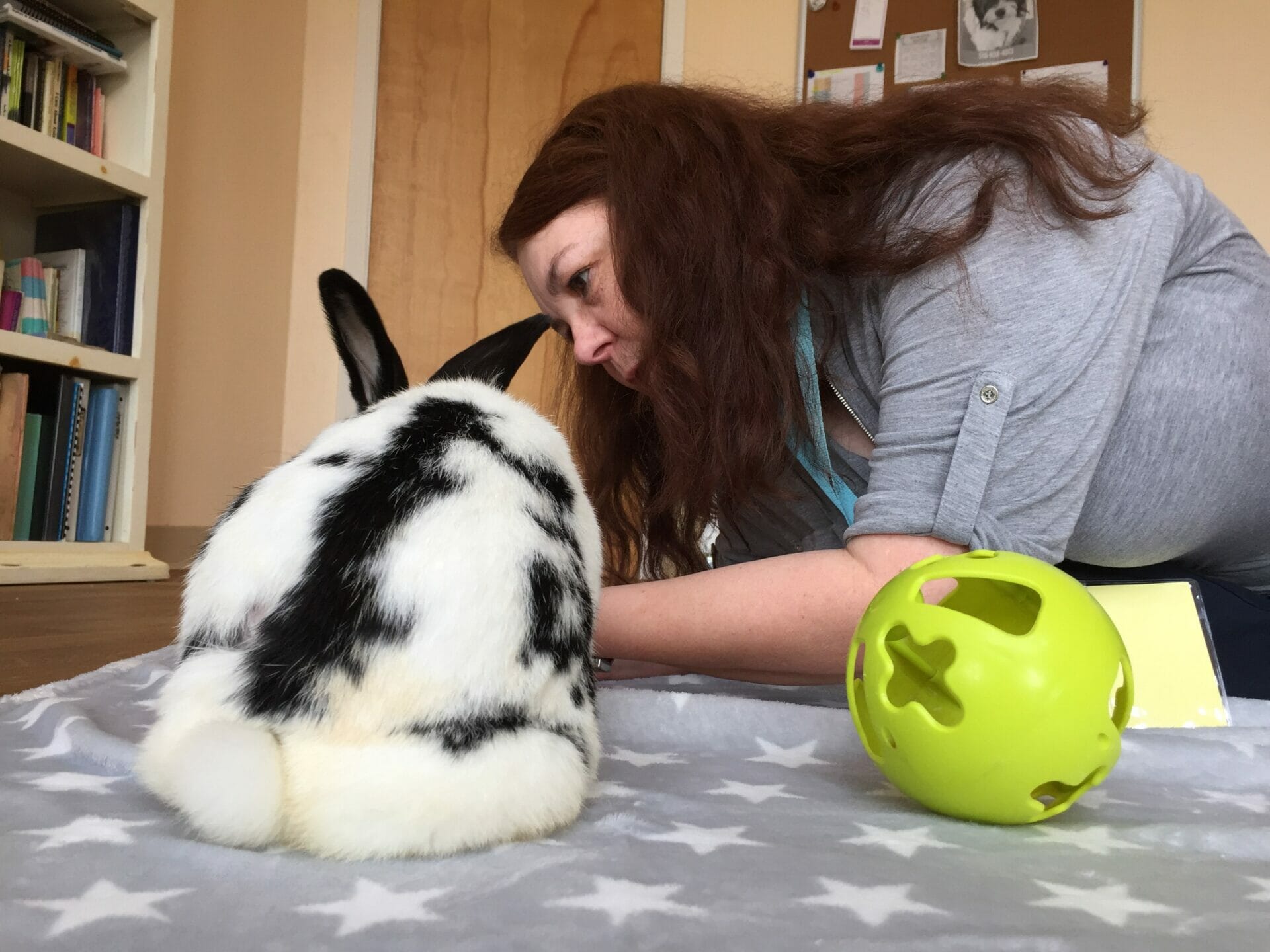California Woman Spends Decades Helping to Save Thousands of Rabbits From Euthanasia

Although Beth Woolbright has always been an animal lover, she didn’t have a great relationship with her first rabbit. She adopted him in college and struggled to bond with him until she decided to stop treating her pet the way she assumed rabbits wanted to be treated, and instead started treating him like a roommate.
“When I opened my eyes to what a rabbit really was like and stopped trying to hold him and cuddle him, and [instead] let him show me what it was like to hop around my room and explore the world through his eyes,” Beth said, “that’s when I found out what a fabulous animal a rabbit was.”
But not all rabbit owners come to this realization, and instead are left disappointed that their pets aren’t what they hoped they would be and decide to drop their rabbit off at a shelter. The issue surrounding miseducation around rabbits is what inspired Beth over 30 years ago to help co-found The House Rabbit Society, an international organization that has found permanent homes for over 40,000 rabbits that had been scheduled to be euthanized. Beth is now a national board member for the organization as well as an adoption counselor at a local House Rabbit Society shelter — as well as the proud owner of three rescued rabbits who she helped bond, which she described as one of the most rewarding activities she does as a volunteer.
For decades of dedication to providing better lives for both rabbits across the world, Beth is today’s Daily Point of Light award honoree. Points of Light spoke with her to learn more about her journey from uncertain rabbit owner to determined rescuer.
What exactly does the House Rabbit Society do?
The House Rabbit Society is an international rescue organization that rescues rabbits scheduled to be euthanized at shelters and finds permanent homes for them; and provides education, rescue and adoption services, primarily through volunteers. There are chapters around the world and there are several rabbits-only shelters in several large cities in the United States and in a few countries.

Can you describe your volunteer position with The House Rabbit Society?
I’m currently a national board member with the House Rabbit Society as well as an adoption counselor at the House Rabbit Society’s national headquarters in Richmond, California.
As an adoption counselor, I work at the shelter once a month. I put in about a five-hour shift and I work with people who are new to the concept of having a rabbit as a potential family member. I help them figure out if they are what I call “rabbit people.” There are people with rabbits and there are rabbit people. People with rabbits may not keep a rabbit for more than a year whereas rabbit people understand that rabbits are a ten-year commitment and they enjoy all of the things a rabbit has to teach them about being a rabbit. Rabbits are quite different from their reputation and often are a disappointment because of that. For that reason, they are often surrendered to shelters. What we try to do is educate people about what rabbits are really like, help people understand them and appreciate them, and help people who would understand and appreciate them bring them into their homes and be part of their lives, and be a part of that ten- to thirteen-year commitment.
As a board member, I am the secretary for the board, as well as on the national licensing committee which works with the chapters and educators at large. I work on different projects related at the national level.
How did you first get involved in this organization?
I am actually one of the founders of the organization. It began in 1988 when seven off us sat around the table. We were working with two fabulous people who were fostering at the time and they realized there was a need to have a national outreach to help pet rabbits and spread the word about rabbits as indoor companions. Because back in the 80s, it was uncommon to have rabbits indoors as part of the family. They were usually outdoors.
From the time that [the people they were working with] stated fostering to the time we incorporated was only about a year. It went hand in hand with a book they had written called House Rabbit Handbook. The response to the book was phenomenal. People were so excited by the concept of the book. In the process of researching the book, there had been no mention of rabbits as the third most common euthanized animal at shelters. So that came out after the book was printed and that’s when [they] began rescuing the rabbits and fostering. And they also discovered there was an ongoing need for educational information about rabbits and their health and behavior needs. So the education and behavior information go hand in hand with the rescues information, which is the catalyst for the organization being founded.
What inspires you to continuing volunteering with this organization for the past 30 years?
The fact that rabbits are so unrepresented and they don’t have their own voice. They are a fascinating, curious, unique animal, which you can say about every animal. Every animal is unique. But they hold a special place in our culture in that there is no other animal that is pet, meat, laboratory experiment, entertainment, children’s toy — all those things at the same time. They hold such a contradictory place in our society. They’re valued as being cute but they’re also used in so many ways. It’s been my advocation to go out there and try to speak on behalf of the rabbits. Try to show people that they are not what people think they are, that they’re so much more than that. They’re not just cute toys with batteries to operate their noises.

What’s been the most rewarding part of your work?
Seeing the changes over the years. The difference in how rabbits are treated from 1988 to now is tremendous. The fact that in certain parts of the country when you say “I have a rabbit,” people will say “Oh, does it live in the house?” Where as it used to be, you used to say you have a house rabbit and people would look at you cross eyed. That’s been a major change in parts of the country. In other parts of the country it’s still an unusual concept to have a house rabbit. One of the most telling differences between a house rabbit and a backyard rabbit is that a backyard rabbit on average lives one to two years. An indoor rabbit can live up to 13 years. When we started many years ago, an indoor rabbit, you would be lucky if you got seven years. Because of medicine, and learning how to take care of them and what to feed them, they’re living ten to 13 or older. So that’s been a huge advancement. They’re fabulous animals … Their personalities are all very different. They’re quite mischievous in their own right and they’re all curious in their own right if they feel secure.
Are there any future partnerships, programs, or events that you are excited about?
There are lots of events around the country, lots of festivals related to rabbits on our website. We’ve been looking at some opportunities for funding non-exploitative research papers where, for instance, someone could study the effects of wood pellets and what phonemes they put off, because wood stove pellets are often used as a litter for rabbits because they’re very inexpensive. It would be great to confirm that they don’t put off any phonemes that are dangerous to rabbits the way cedar shavings do. That’s the type of research project that we’re interested in. Something that is non-invasive to rabbits and doesn’t exploit rabbits the way traditional research has in the past. We’re looking at finding new things that way.
Why do you think it’s important for others to give back?
It feels good and it makes the world a better place. It’s only by helping each other that we can make this world a cooperative place that’s worth living.
What do you want people to learn from your story?
There are two things. One is that rabbits are fabulous and not what you think they are. They’re incredible creatures who have much to teach people. The second thing I want people to know is that this organization is run by volunteers. We have a very small staff for an international organization and if by people reading about this organization, saying that I can do that too, then we’ve been able to make such an impact.
Do you want to make a difference in your community like Beth? Click here to find local volunteer opportunities.
